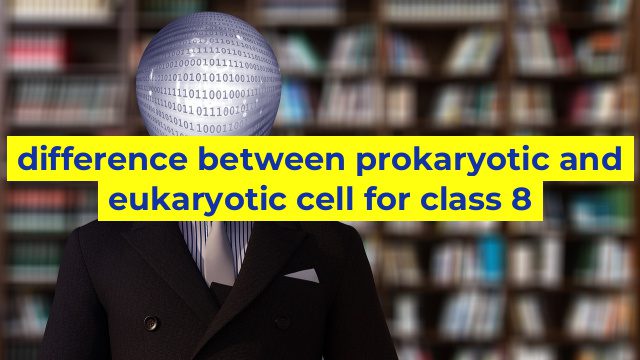Understanding the Differences between Prokaryotic and Eukaryotic Cells
Cells are the building blocks of all living organisms. They come in different shapes and sizes, but they all have a similar structure that distinguishes them from non-living things. There are two main types of cells, prokaryotic and eukaryotic. While they share similarities, they also have significant differences.
Prokaryotic Cells
Prokaryotic cells are simpler and smaller compared to eukaryotic cells. They are found in bacteria and archaea. They lack a nucleus enclosed by a membrane, and instead, their DNA is present in a single circular chromosome. The absence of membrane-bound organelles is another characteristic feature of prokaryotic cells. Instead, they have ribosomes for protein synthesis, and some have flagella, which allow them to move around.
One of the most significant roles of prokaryotic cells is their ability to carry out many essential processes vital to life on Earth. They are vital in synthesizing nutrients, such as nitrogen and phosphorus, and they help break down waste in the environment. Prokaryotic cells play a crucial role in many ecological cycles, such as the carbon and nitrogen cycles.
Eukaryotic Cells
Eukaryotic cells are more complex and larger than prokaryotic cells. They are found in plants, animals, fungi, and protists. Eukaryotic cells come with a nucleus, which stores the genetic material, and the nucleus is encircled by a membrane known as the nuclear membrane. In addition, eukaryotic cells have other membrane-bound organelles, including mitochondria, Golgi apparatus, endoplasmic reticulum, and lysosomes.
Unlike prokaryotic cells, eukaryotic cells have a cytoskeleton, which provides structural support and aids in cell division. They also have a more advanced mechanism for cell division, known as mitosis, which allows them to create new cells. Eukaryotic cells can also perform endocytosis, which is the process whereby cells ingest substances such as nutrients or others.
Conclusion
The differences between prokaryotic and eukaryotic cells are noteworthy. Prokaryotic cells may be smaller and simpler, but they play important roles in the natural world, especially in cycling nutrients. Eukaryotic cells, on the other hand, are more complex, with numerous organelles and a well-defined nucleus. They are the building blocks of all multicellular organisms and are responsible for performing most of the body’s functions. Understanding these differences is essential for anyone interested in biology or the natural sciences.
Table difference between prokaryotic and eukaryotic cell for class 8
| Features | Prokaryotic Cell | Eukaryotic Cell |
|---|---|---|
| Nucleus | Absent | Present |
| Size | Small (less than 10 micrometers) | Large (10-100 micrometers) |
| Membrane-bound organelles | Absent | Present |
| Cellular division | Binary fission | Mitosis and meiosis |
| Cell wall | Present (made of peptidoglycan) | Present (plants – made of cellulose, fungi – made of chitin) |
| Flagella | Present (made of flagellin) | Present (made of microtubules) |
| Reproduction | Asexual | Both asexual and sexual |
| Cytoplasm | Simple, without complex internal structure | Complex, with various organelles and structures |
| Example | Bacteria | Plant and animal cells |

